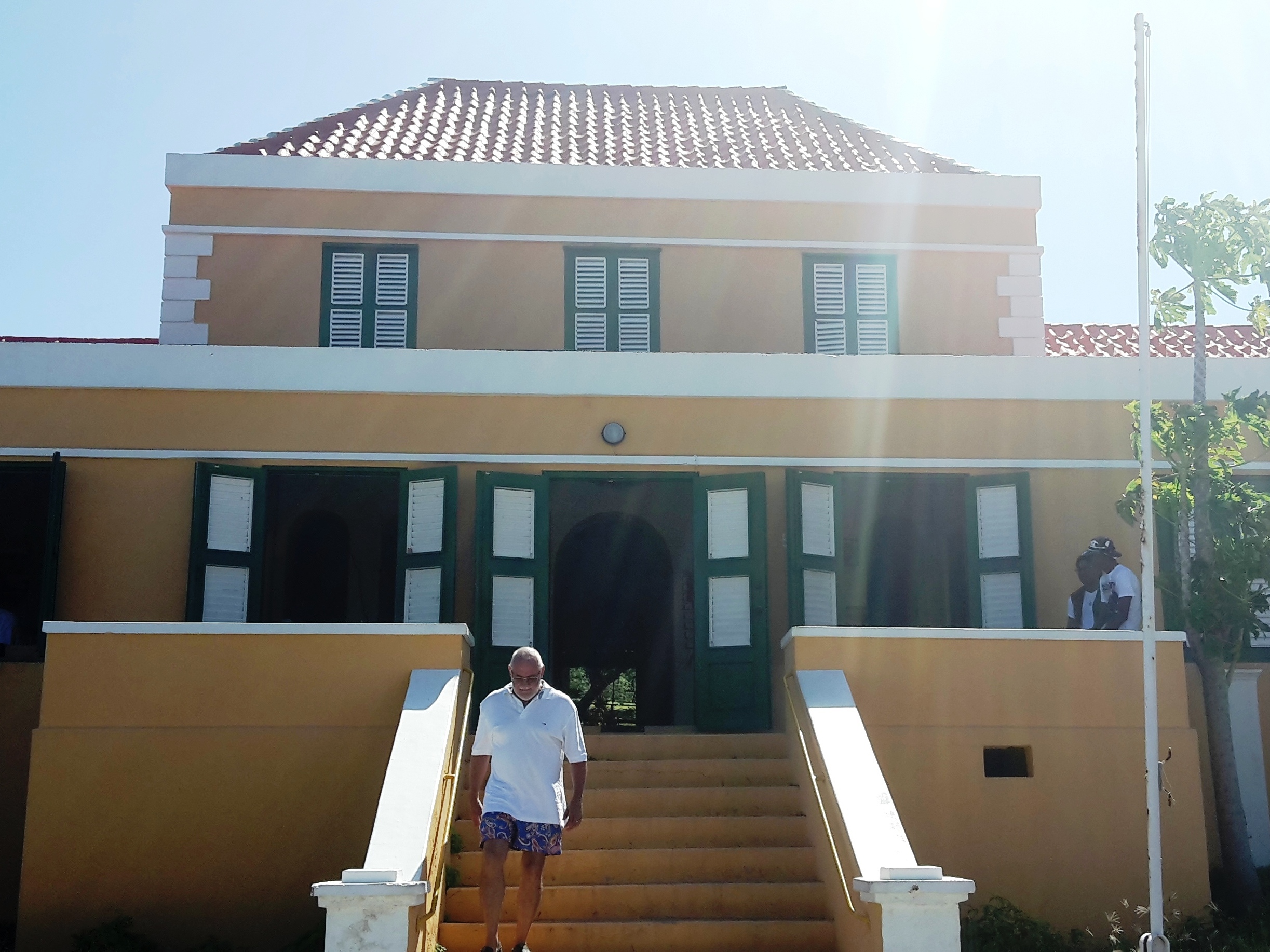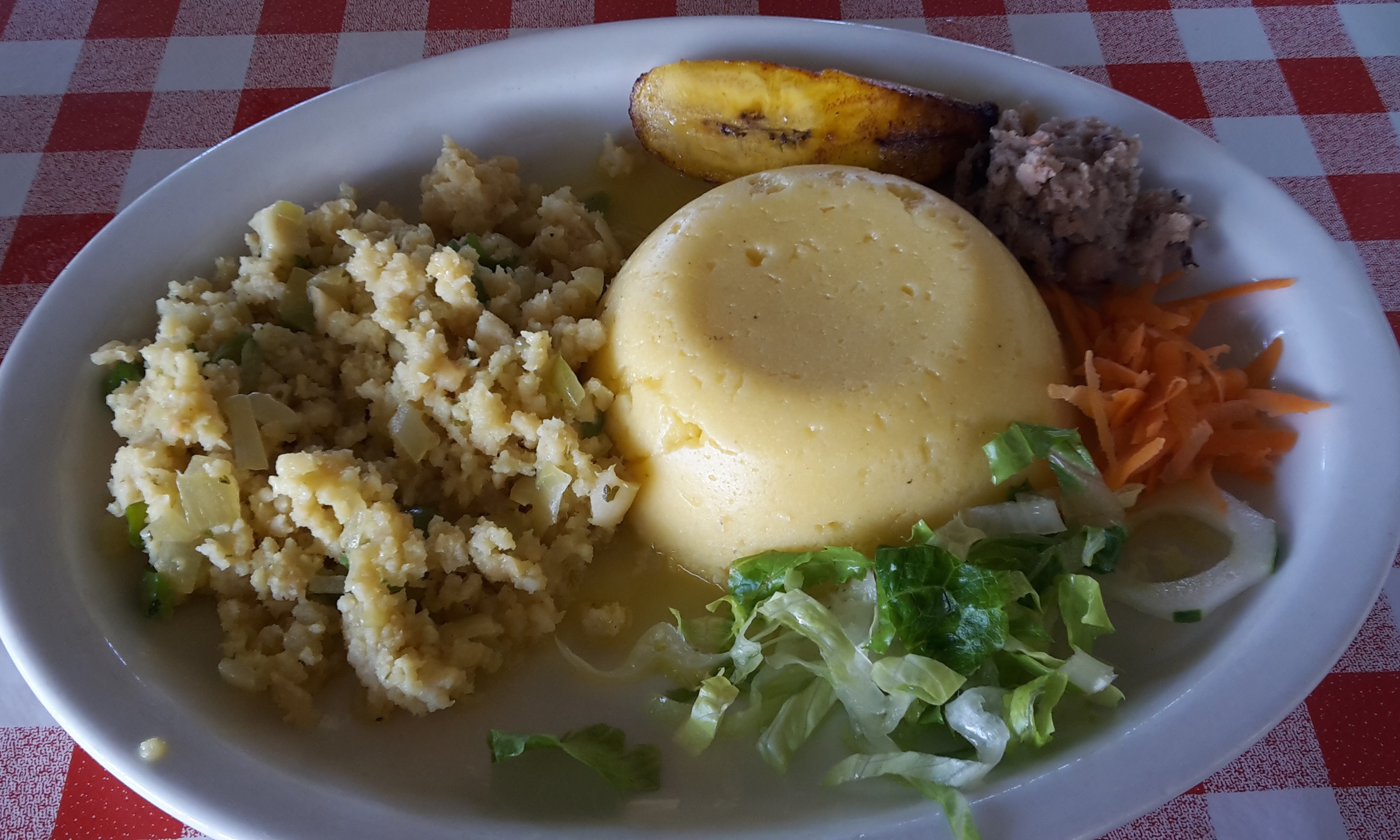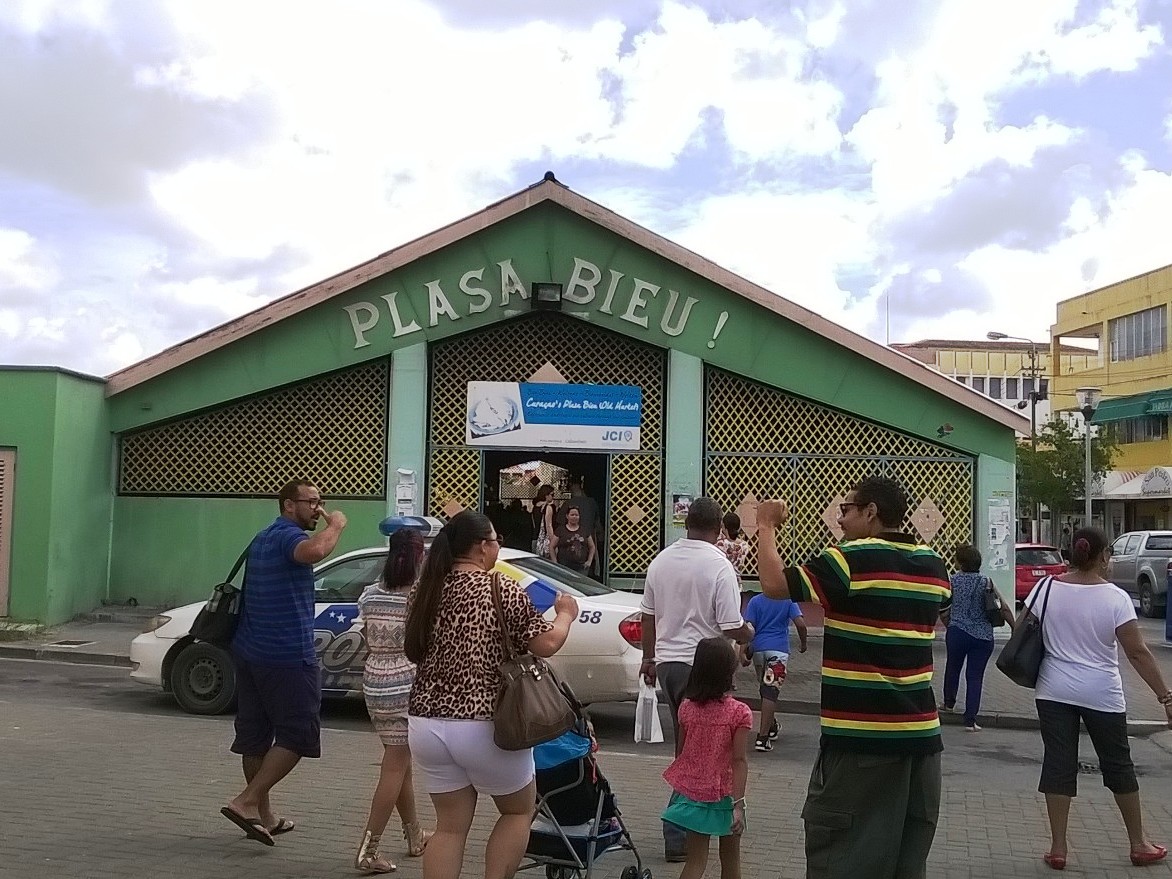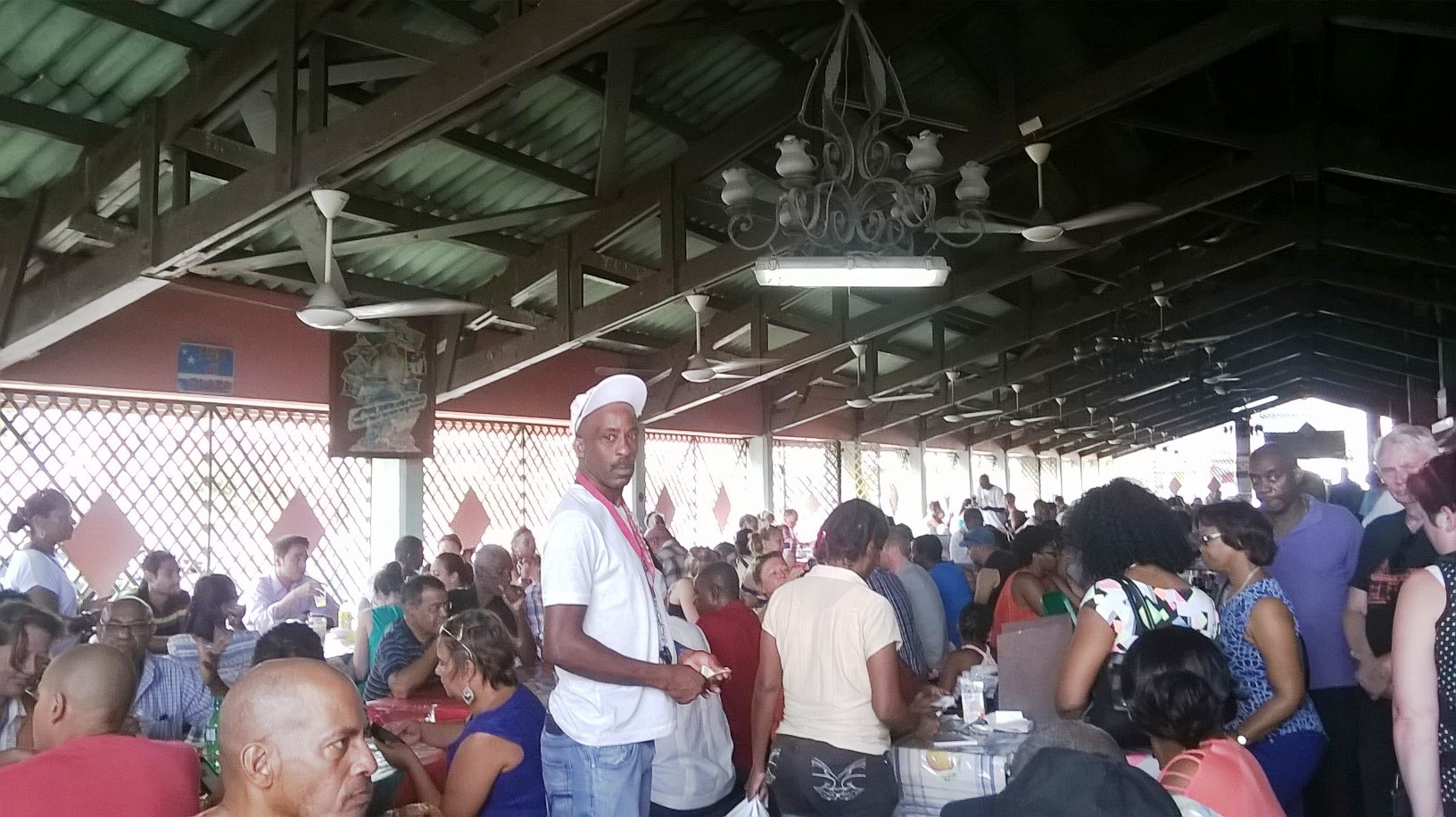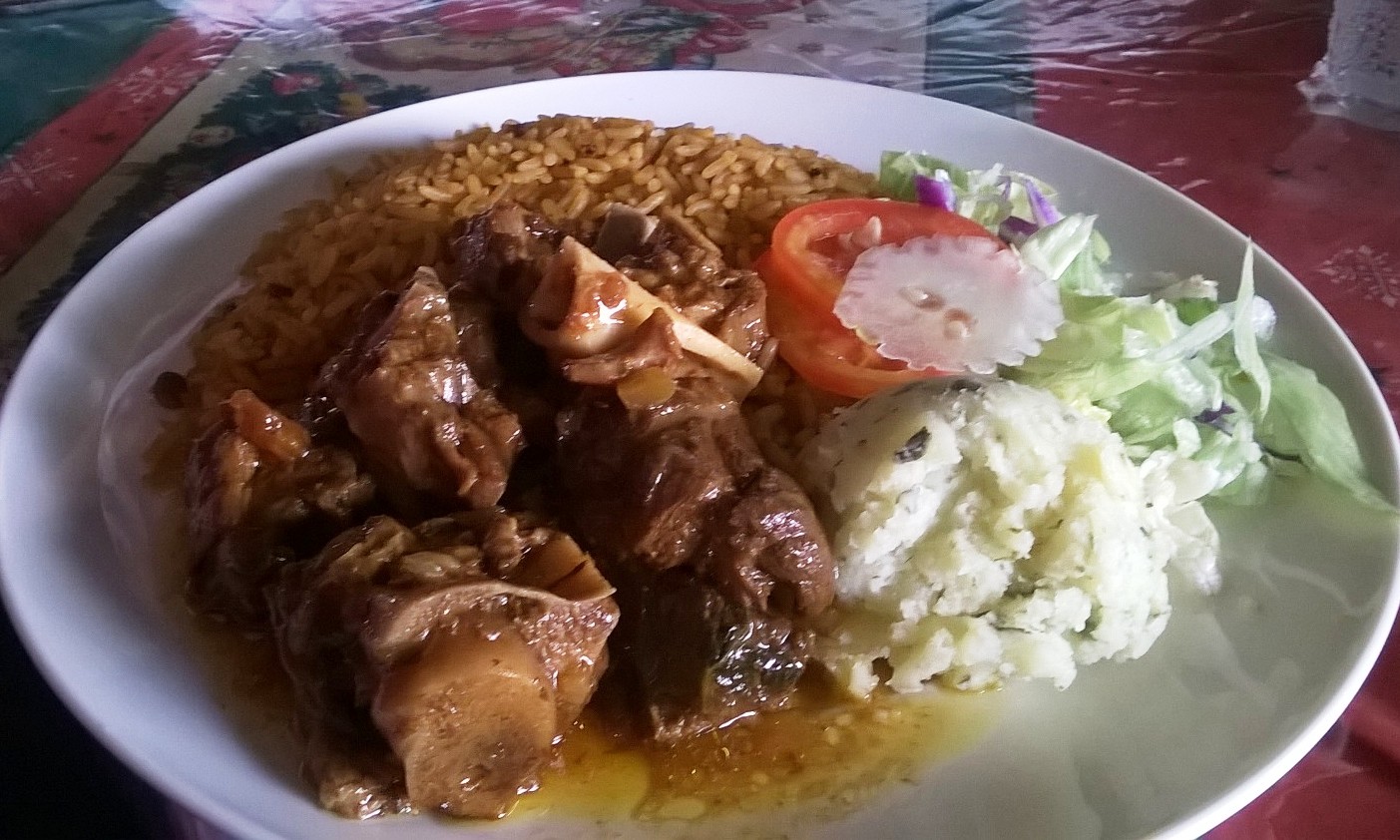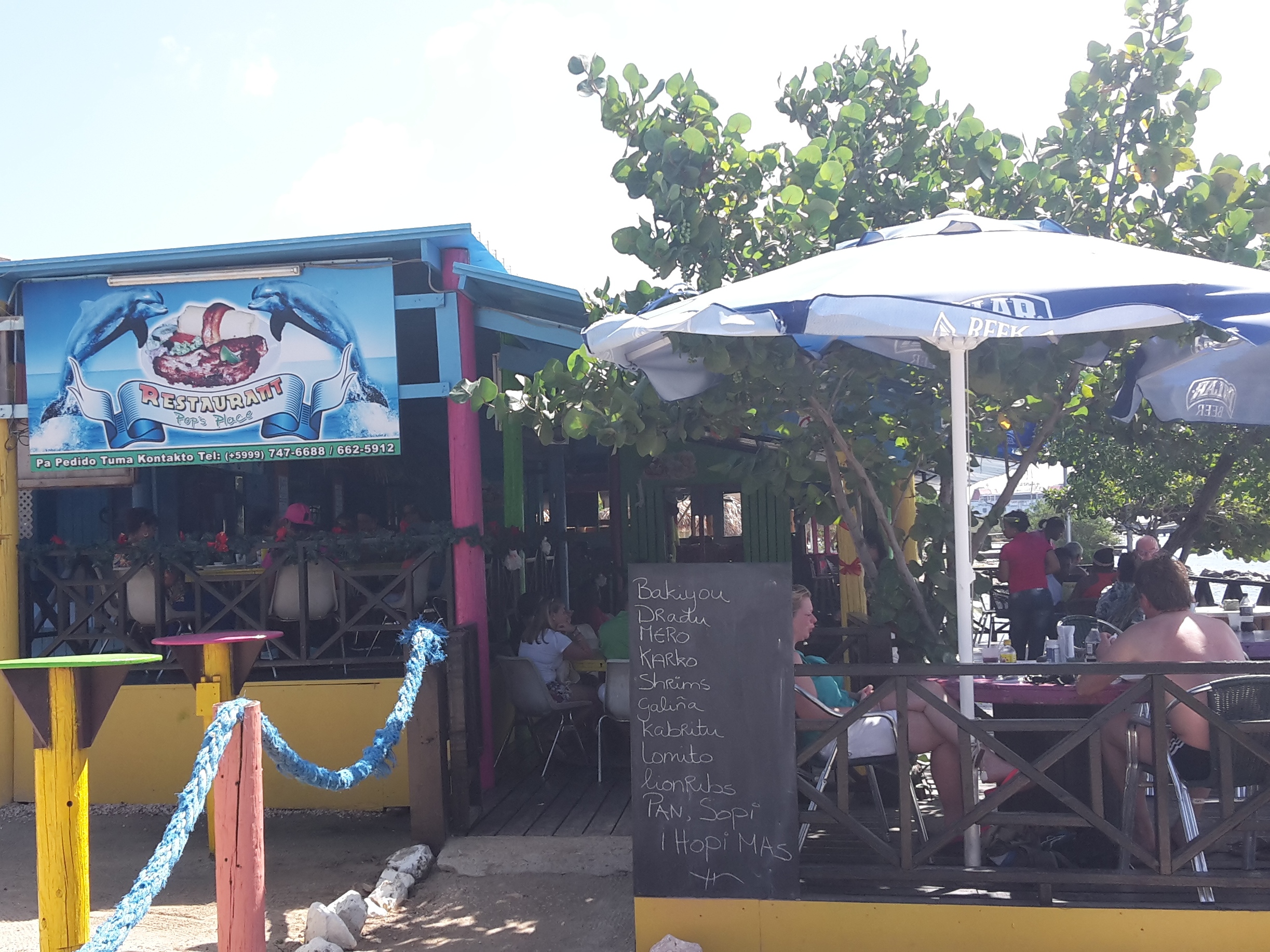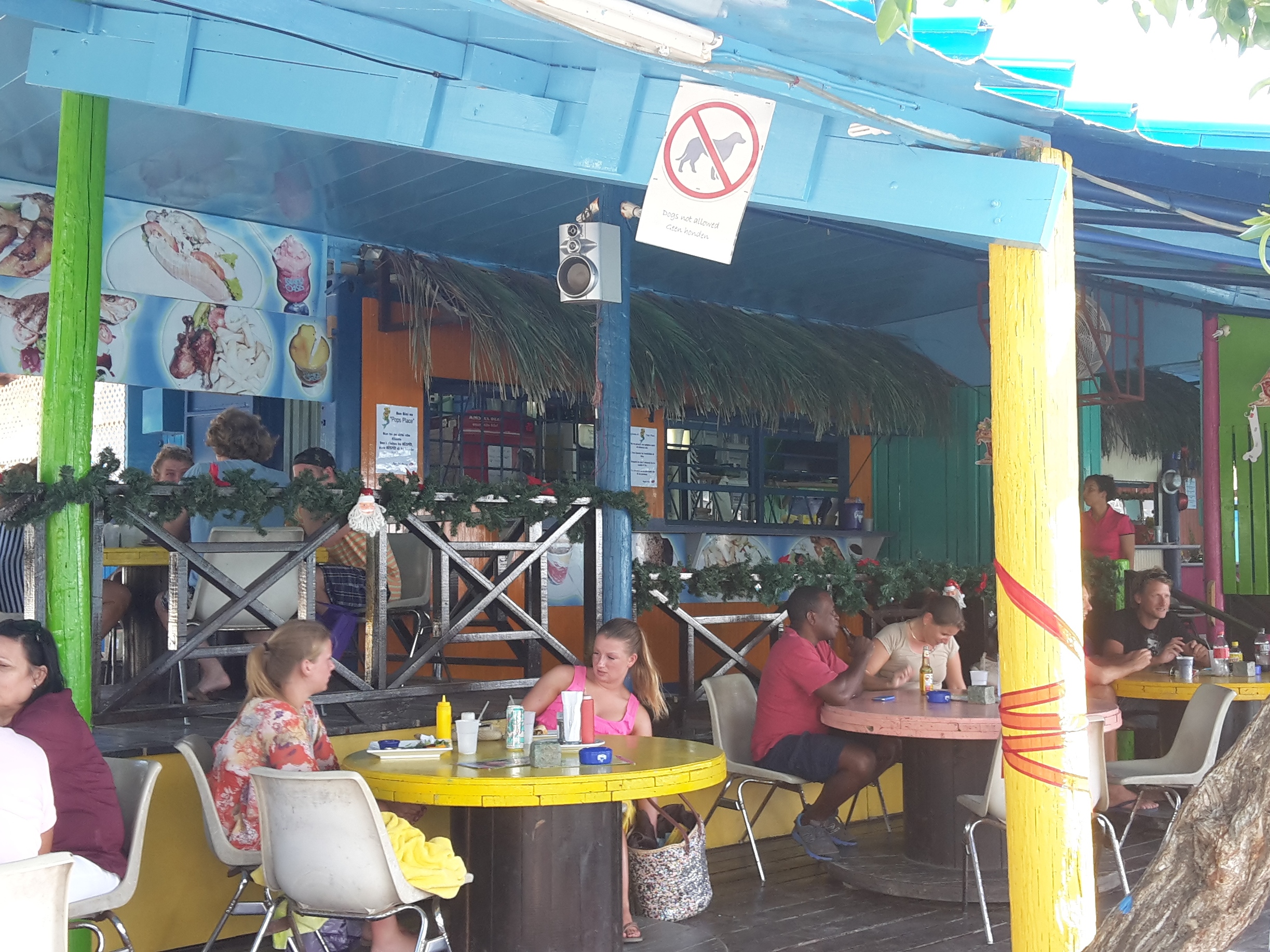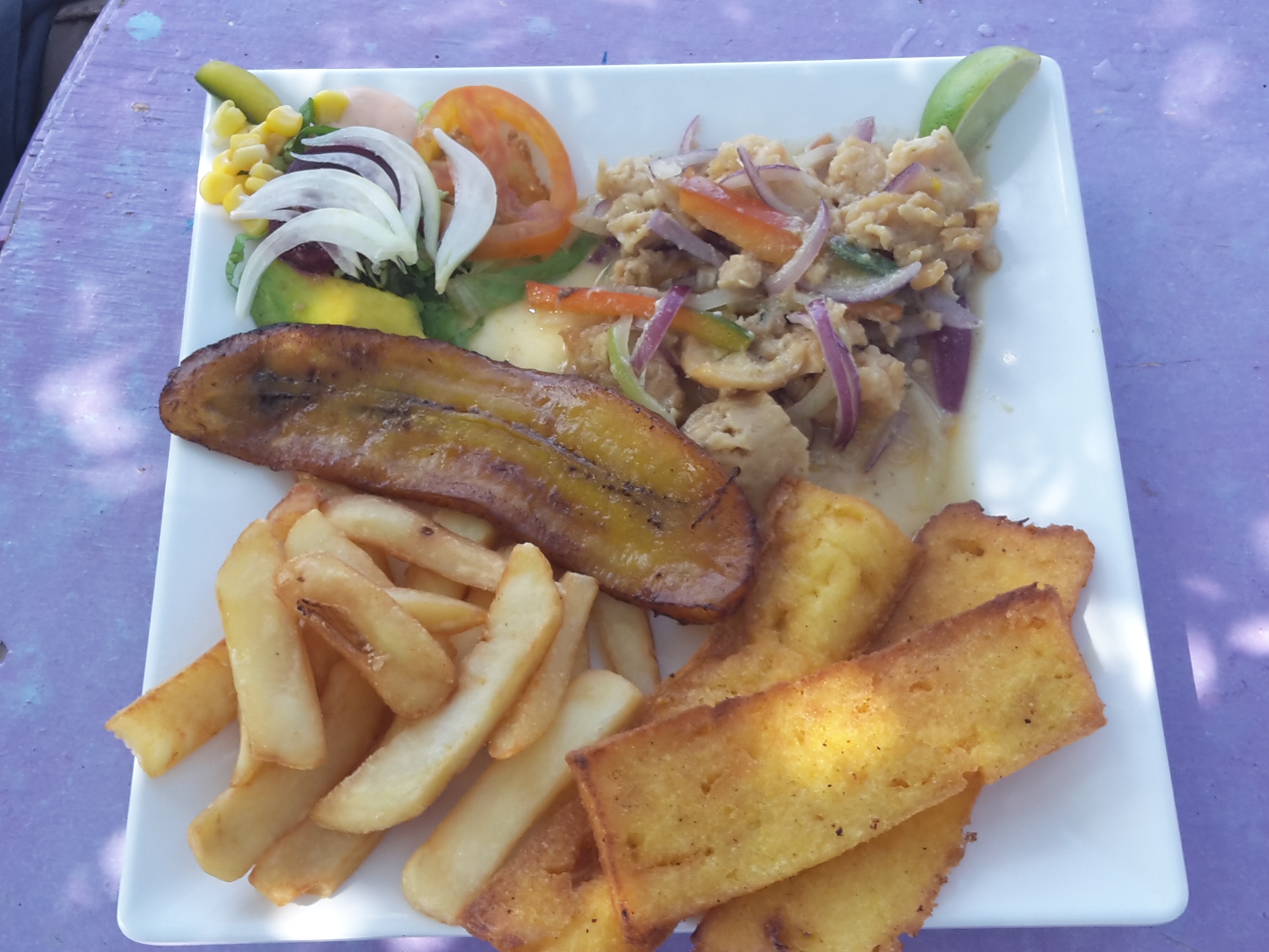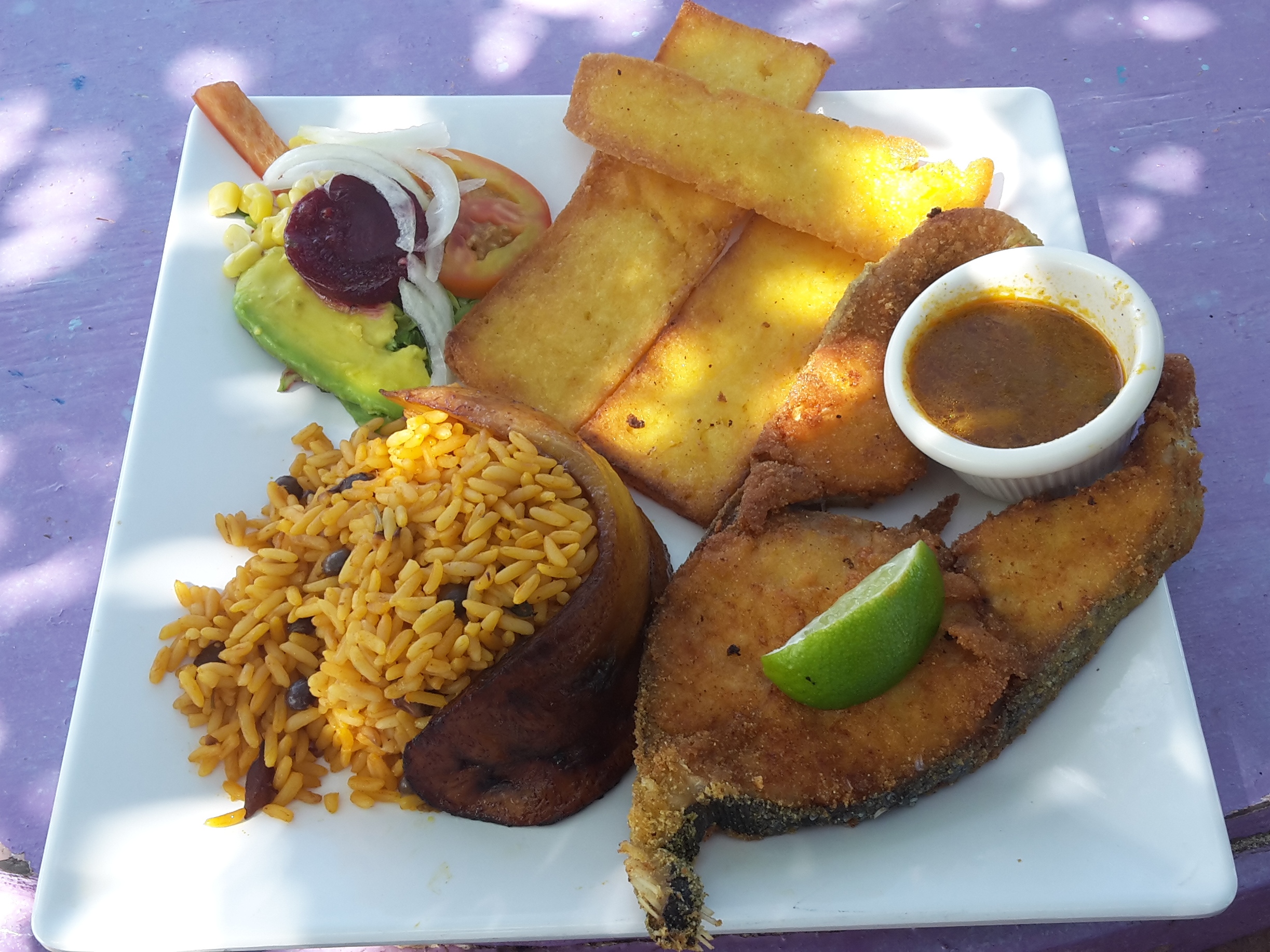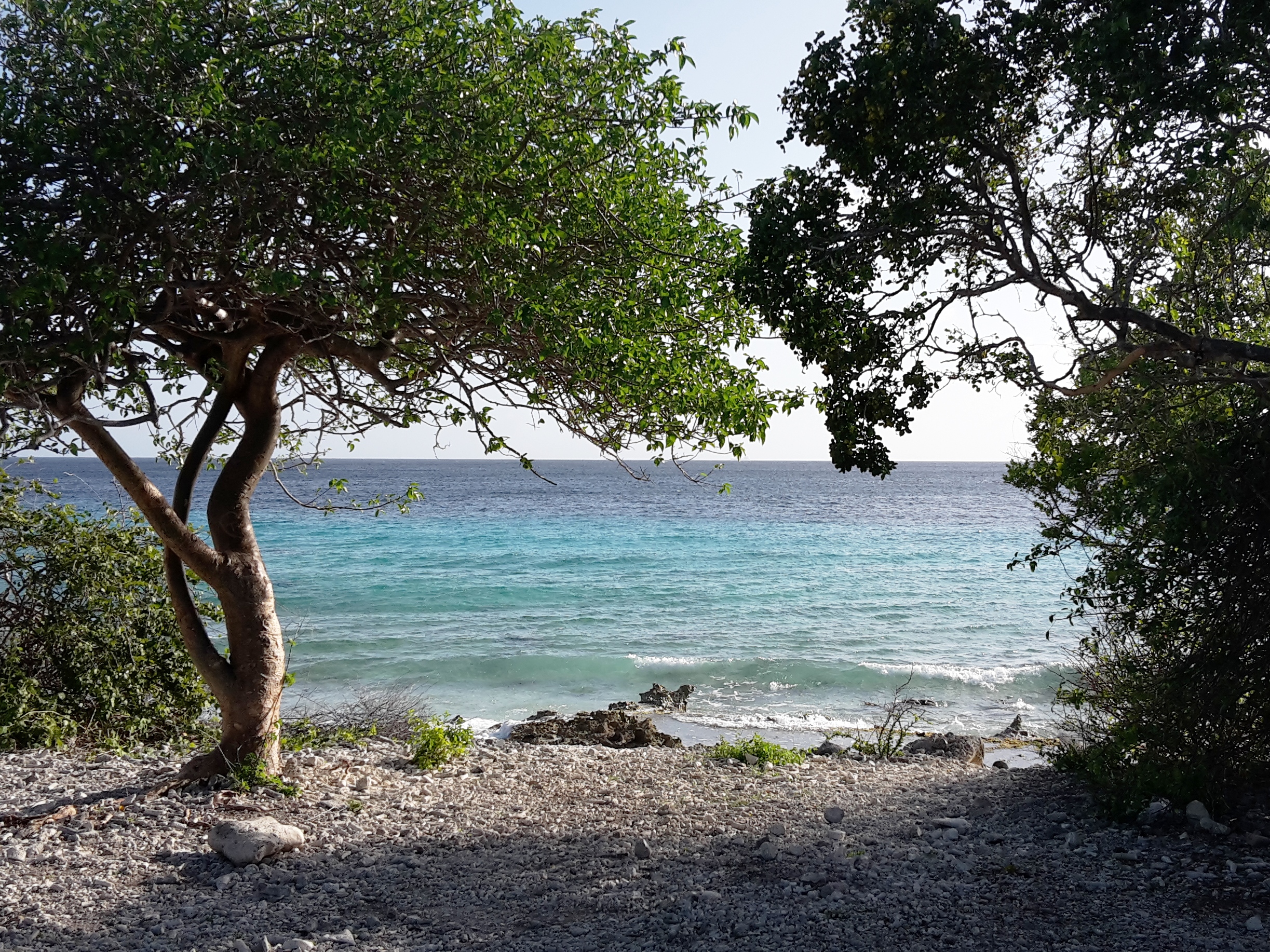Kuminda Krioyo, Curaçao
Kuminda krioyo, the local creole food, is always one of the first things we look for when coming to Curaçao. These meals consist of hearty and filling dishes, often featuring stews, fried fish, and local starches such as funchi, aros moro, and tutu. This time around we decided to sample the food at three different restaurants: Dokterstuin, Zus di Plaza, and Pop’s Place.
First of all, Dokterstuin. This old landhuis has been converted into a restaurant and is situated on the west side of the island. We stopped by here for lunch on our way to the beach and ordered three different dishes, karko stoba, concomber stoba, and mula. Karko stoba is conch stew. If you’ve never had conch before, I suggest you try it, because it is awesome. In fact we ordered it at all three places, and had it at the late night truki pan twice as well (read about it in our next post). It’s somewhere in between scallops and octopus and easily available in the Caribbean. The karko stoba was very fresh, quite lemony in fact, and went very well with the funchi, a thicker version of polenta. The meal is served with a bit of tutu, mashed black eyed peas with coconut milk, and a fried plantain.
Concomber stoba is a stew made of a local vegetable, concomber chiki. We had no idea what this is in any other language, nor have we ever seen it anywhere else, but thankfully the internetz has all the answers: “cucumis anguria, commonly known as bur cucumber, bur gherkin, cackrey, gooseberry gourd, maroon cucumber, West Indian gherkin, and West Indian gourd, is a vine that is indigenous to Africa, but has become naturalized in the New World… The surface of the fruits have long hairs covering a surface having warts or spines: The inner flesh is palid to green… The flavor is similar to that of a cucumber.” So they make a stew out of this, filled with chunks of rabu, salted pigtail, and karni sa, salted beef. The concomber chiki taste very herbaceous and are slightly tart, which combined with the salted meats make for an exciting dish. The third dish was the fried mula, or wahoo, covered in stewed vegetables. The fish was fried perhaps a bit too long as the meat was quite dry.
Our second try at kuminda krioyo was at Zus di Plaza, in downtown Punda in the foodhall Plasa Bieu. This place is always packed and we went on a Saturday, so it was extremely busy. There is no clear system to seating and ordering, it’s sort of organized chaos, and if you’re not local, it can be intimating. I was looking forward to ordering red snapper but unfortunately they didn’t have any. We found out later, when I tried to order red snapper at a different restaurant, that fishing was being hampered by the weather and rough seas. But they did have karko, so I ordered that once again. We also had the kabritu stoba, which you may remember from our post about Taberna Dushi.
The karko was good, and the stew it was in was more buttery than the previous one. This made for a good dipping sauce for the funchi, which was also softer than the one before. The side of mashed potato was completely unnecessary considering the vast amount of starch already on the plate. The kabritu stoba was clearly goat. It was soft and tender, but with a strong goat smell and flavor, enjoyed thoroughly by everyone but me. We also ordered a side of tutu and arepa di pampuna. The tutu here was better than at Dokterstuin, more delicate and fine. Lastly, the pillowy pumpkin pancakes, dotted with raisins, were a great ending to the meal.
The last stop was Pop’s Place at Caracasbaai. We came early, just after noon, and were able to get a great table at the water’s edge. We sat there listening to the waves slowly hitting the shore and kids running around on the beach and splashing in the water. It’s just a bright and happy place and what sets it apart from many establishments on the island is the extremely friendly service. Though the menu is traditional, the food is much more contemporary compared to the other two places we went.
We ordered the karko once again and the dradu, or mahi-mahi. As opposed to the previous two places, they serve funchi hasa here, which is the fried version that we greatly prefer. The karko was tasteful and tender, and probably the better of the three. The mahi-mahi, however, was the real winner here, and had also been suggested by the waitress. Unlike traditional fried fish, this one was slightly breaded, which gave it a great crunch while the meat was juicy and sweet.
As a last note, if you’re in a hurry, these are not places for you. Actually, if you’re in a hurry, Curacao is not the place for you. They will take your order when they get around to it, and your food will come when it’s done. Just like the buses on the island will go when it’s time, and no one knows when that is. “I’m on my way” can mean anything from 10-60 minutes. That’s just the way things always have been and always will be. Take a breath, settle down, sit back, have a beer, and relax.

